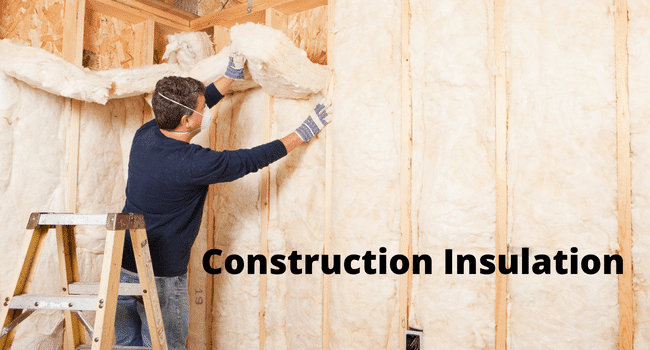Table of Contents
Are you in the process of building a new home? If so, you’ll want to make sure that you insulate it properly. New insulation is one of the most important aspects of a new construction project, and it’s crucial to get it right. In this blog post, we will discuss six tips for installing new insulation in a new construction project. Follow these tips, and you’ll be sure to have a warm and comfortable home!
#1: Choose the Right New Insulation for Your Project
There are many different types of new insulation available on the market, and it’s important to choose the right one for your project. If you’re not sure which type of new insulation to use, consult with a professional. They will be able to assess your needs and recommend the best option for your home.
Some of the most popular types of insulation include:
– Fiberglass batts or rolls
– Spray foam insulation
– Rigid foam board insulation
– Loose-fill fiberglass or cellulose insulation
Each of these options has its own set of benefits, so be sure to do your research before making a decision.
#2: Install Insulation in the Right Areas
Once you’ve chosen the right insulation for your project, it’s important to install it in the right areas. You’ll want to make sure that you insulate all of the exterior walls, as well as the attic and crawl spaces. These are typically the areas where heat is most likely to escape from your home.
If you’re not sure how much insulation to use, consult with a professional. They will be able to assess your needs and recommend the best option for your home.
#3: Use the Right Tools and Materials
When you’re ready to install insulation, be sure to use the right tools and materials. If you’re not sure what you need, consult with a professional. They will be able to recommend the best products for your project.
Some of the tools and materials you’ll need include:
– Insulation (of course!)
– A measuring tape
– A level
– A straightedge or ruler
– Caulking gun
– Foam sealant (optional)
Once you have all of the necessary tools and materials, you’ll be ready to start installing insulation!
#4: Follow the Instructions
When you’re installing insulation, it’s important to follow the instructions carefully. If you’re not sure how to do something, consult with a professional. They will be able to walk you through the process and answer any questions you may have.
Insulation installation is not a difficult task, but it’s important to do it correctly. If you take your time and follow the instructions, you’ll be sure to have a warm and comfortable home.
#5: Add a Vapor Barrier
Once you’ve installed insulation, you’ll want to add a vapor barrier. This will help to prevent moisture from damaging your insulation. There are many different types of vapor barriers available, so be sure to choose one that is right for your project.
Some of the most popular types of vapor barriers include:
– Polyethylene sheeting
– Aluminum foil-faced batts or rolls
– Kraft paper-faced batts or rolls
– Building paper
Be sure to consult with a professional before choosing a vapor barrier. They will be able to recommend the best option for your home.
#6: Seal Your Home
Once you’ve installed insulation and added a vapor barrier, you’ll want to seal your home. This will help to prevent heat from escaping and will make your home more energy-efficient. There are many different ways to seal a home, so be sure to consult with a professional. They will be able to recommend the best option for your project.
Some of the most popular methods of sealing a home include:
– Caulking around windows and doors
– Adding weather stripping around doors and windows
– Installing storm doors and windows
Sealing your home is an important step in insulating it properly. Be sure to consult with a professional before beginning this process.
Following these six tips will help you insulate your new home properly. If you’re not sure about something, be sure to consult with a professional like iFoam. They will be able to assess your needs and recommend the best course of action. Insulating your home correctly will result in a warm and comfortable home that is energy-efficient.
Did you just get your new home built? Here are some roofing problems homeowners commonly face! Click here to learn more!
Read More on KulFiy
